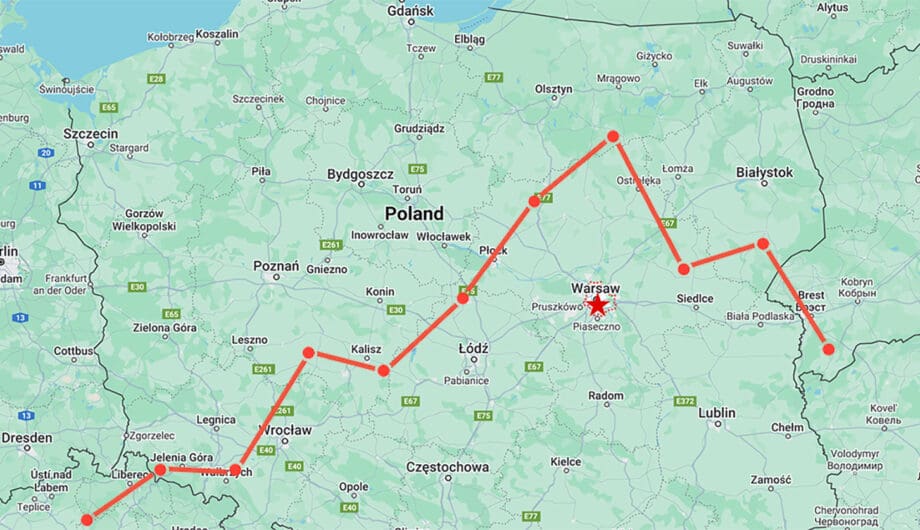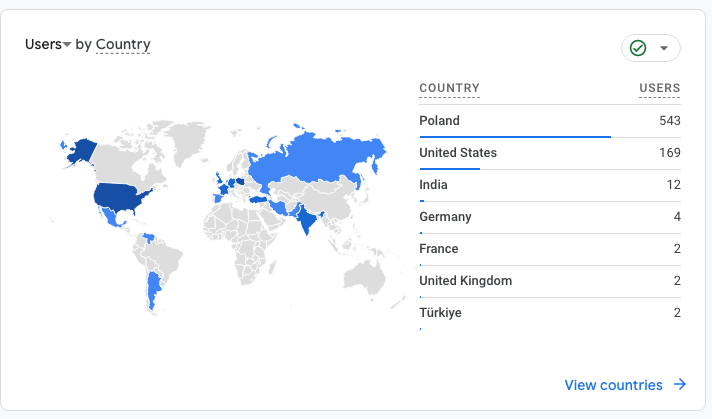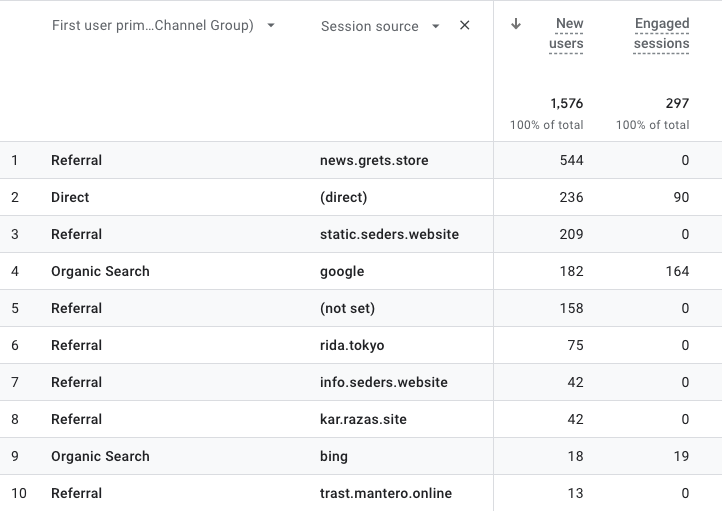
If you have taken a look at your Google analytics in the last month, you might have a surprise in there. A huge uptick in traffic from… Poland? Here’s a screenshot of what I saw when I logged into a client’s analytics recently.

This was a little surprising and a little startling. Like, what’s going on in Poland that would send so many people to this site? Then another client emailed me asking why they were getting so much traffic from Poland too. So I took a look and saw similar stats.
What’s the deal? So I started to dig a little deeper and saw this stat.

So this site had 937 visitors from Poland and yet there was ZERO engagement with the site? That is fishy. And I immediately knew what this was. It’s referrer spam.
What is referrer spam?
Referrer spam, also known as ghost spam or referrer traffic spam, refers to fake traffic data that infiltrates your Google Analytics reports. These are essentially phony visits generated by bots, skewing your website’s analytics and making it difficult to understand genuine user behavior.
Here’s how referrer spam works:
- Spambots visit your site: Malicious programs visit your website and manipulate the referrer data to appear as if they came from another website (the referrer).
- Fake traffic gets reported: Google Analytics gets tricked into believing there were actual visits from these non-existent referrers.
- Analytics data gets polluted: Your reports show inflated traffic numbers and potentially nonsensical referral sources.
Here are some ways to identify referrer spam:
- Unusual referrers: Look for suspicious domain names in your referral traffic reports that you don’t recognize.
- Unexplained traffic spikes: If you see sudden bursts of traffic with no corresponding marketing efforts, it could be spam.
- Low engagement metrics: Spam visits typically have a 100% bounce rate (users leaving immediately) and zero conversions.
Why does referrer spam exist? What does it do?
First of all, know that there’s nothing on your site causing it, and there’s not a lot you can to do prevent it from happening. But here’s why it happens. Spammers use referrer spam for a few reasons, aiming to manipulate how search engines view their websites:
- Deceptive SEO Boost: Search engines consider website traffic as a factor in ranking websites. By inflating their website’s traffic with referrer spam, spammers aim to trick search engines into thinking their site is more popular and relevant than it actually is. This can lead to higher search engine rankings for the spammer’s website, potentially attracting more visitors (though not genuine ones).
- Wasting Your Time: Spammers often use referrers that look like legitimate websites. When you see these in your analytics reports, you might waste time investigating them, clicking on their links, or even trying to contact them for partnerships (which is exactly what the spammers want).
- Trying to bring traffic to a malicious website: If you see that one website is sending traffic to yours, you might want to go look at it… and it could be a website that is phishing or has malware. This could be a scam.
Take a look at this screenshot that you see in the analytics. 544 referral visits and checkout the source. I’m not adding a link to it.

If you are looking at your traffic, and notice a huge surge from a country, and then you see these sites as sites that are directing traffic to your site, it’s often compelling for someone to want to visit those sites to see what is bringing traffic to their website.
Don’t do it!
Number 1, you can tell that these are all spam because there is zero engagement. Number 2, these sites could be malicious in nature.
How do you prevent referrer spam?
You can’t really stop referrer spam before it starts, but once you see it, you can eliminate future issues from the same spammer in a your analytics reports.
List Unwanted Referrals:
This is a built-in feature in GA4 that allows you to specify domains whose traffic you don’t want to be categorized as referrals. Here’s how to use it:
- Go to Admin in your GA4 property.
- Navigate to Data Streams and select your web data stream.
- Click on Configure Tag Settings (usually at the bottom).
- In the Settings section, find List unwanted referrals.
- Click and add the domains you want to exclude. Traffic from these domains will be categorized as “direct” instead of referrals in your reports.
There’s no reason to panic when you see referrer spam. There’s little chance that your site has been infected or that you are being hacked. It’s annoying and it messes up your data, but it probably isn’t going to cause your site any harm.
Amy Masson
Amy is the co-owner, developer, and website strategist for Sumy Designs. She's been making websites with WordPress since 2006 and is passionate about making sure websites are as functional as they are beautiful.
